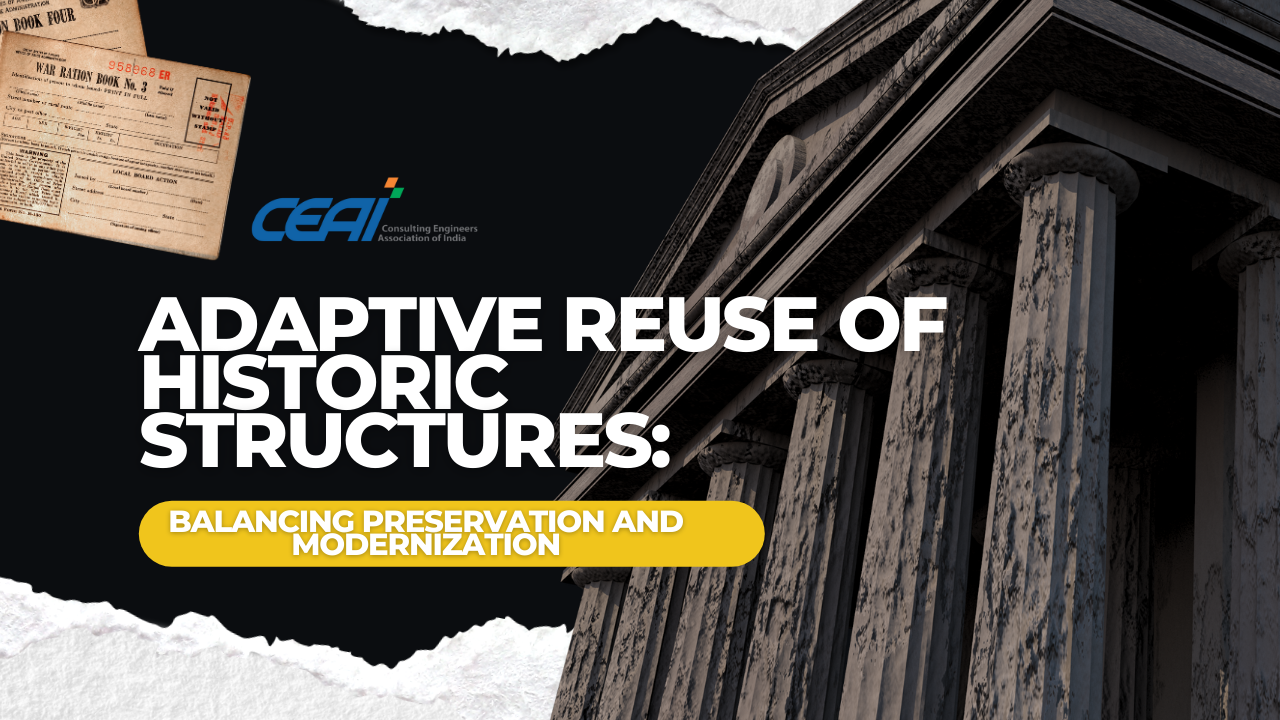
Preserving the past while embracing the future is delicate balance architects and engineers face when dealing with historic structures. The concept of adaptive reuse offers a solution that allows us to breathe new life into these buildings while honoring their historical significance. By repurposing and renovating these structures, we can achieve a harmonious blend of preservation and modernization.
Celebrating Historical Heritage
Historic structures hold a special place in our collective memory. They tell stories of the past, representing the cultural and architectural heritage of a community. Adaptive reuse allows us to retain the historical character of these structures, preserving their unique features, architectural elements, and cultural value. By celebrating their historical heritage, we create a sense of continuity and pride within the community.
Sustainable Approach
Adaptive reuse aligns with sustainable principles by promoting the efficient use of existing resources. Instead of demolishing old structures, adaptive reuse minimizes the environmental impact of new construction materials and energy consumption. By repurposing existing buildings, we reduce waste, save energy, and contribute to a more sustainable built environment. It is an eco-conscious approach that embraces sustainability while respecting the past.
Economic Benefits
Revitalizing historic structures through adaptive reuse has significant economic benefits for communities. These projects create new opportunities for businesses, tourism, and job creation. Historic buildings transformed into vibrant mixed-use spaces, such as hotels, offices, or cultural centers, can drive economic growth and attract investment. Adaptive reuse projects contribute to the revitalization of urban areas, enhancing the quality of life for residents and fostering economic vitality.

Design Challenges and Innovation
Adaptive reuse projects come with unique design challenges. Architects and engineers must strike a delicate balance between preserving the structure’s historical integrity and accommodating modern functionality and safety requirements. This calls for innovative design solutions that seamlessly integrate old and new elements. The adaptive reuse process encourages creativity and pushes professionals to think outside the box, resulting in innovative architectural solutions that captivate and inspire.
Community Engagement and Identity
The adaptive reuse of historic structures creates a strong sense of community engagement and identity. By repurposing these buildings, we provide spaces that resonate with the local population and offer opportunities for community gatherings, events, and cultural activities. These projects become focal points that foster a sense of pride, ownership, and connection within the community, promoting social interaction and cultural exchange.
Cultural Preservation and Education
The adaptive reuse of historic structures provides an opportunity to educate future generations about the cultural significance of the past. By transforming these buildings into museums, galleries, or exhibition spaces, we can showcase the history, art, and traditions of a community. This cultural preservation enhances the understanding and appreciation of our heritage, fostering a sense of identity and pride among residents and visitors alike.

Long-Term Durability and Resilience
Historic structures often possess inherent durability and craftsmanship that can withstand the test of time. Through adaptive reuse, we can leverage these qualities and enhance the long-term durability and resilience of the buildings. By incorporating sustainable materials, advanced structural engineering, and modern technology, we can ensure that these structures continue to stand strong for future generations, maintaining their historical value while meeting the demands of contemporary needs.
Revitalization of Underutilized Spaces
Many historic structures exist in urban areas that have experienced neglect or underutilization. Adaptive reuse projects offer an opportunity to breathe new life into these spaces, reviving neighborhoods and creating vibrant urban centers. By repurposing vacant or dilapidated buildings, we can transform them into thriving hubs of activity, attracting businesses, residents, and visitors. This revitalization brings economic, social, and cultural benefits to the surrounding community, contributing to the overall growth and development of the area.
In conclusion, the adaptive reuse of historic structures strikes a balance between preserving our heritage and embracing modernization. It allows us to breathe new life into old buildings, creating sustainable, economically viable, and culturally rich spaces. By blending the past with the present, we can revitalize communities, celebrate history, and inspire future generations.
